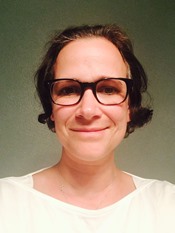Program Information
Characterization of Edge Effects in a Commercial Low-Dose Image Processing System
R Marsh*, M Silosky , University of Colorado School of Medicine, Aurora, CO
Presentations
SU-E-I-12 Sunday 3:00PM - 6:00PM Room: Exhibit HallPurpose:
Minimizing radiation dose while preserving image quality is critical in fluoroscopic imaging. One recent development is a noise reduction system (Allura Clarity) offered by Philips. Others have reported approximately 50% reduction in air kerma when using Clarity. These studies, however, provide only a cursory look at how the Clarity system affects image quality. The purpose of this work was to evaluate the effect of Clarity on the appearance of high-frequency image information.
Methods:
A lead attenuator with a smooth edge was imaged on two Philips Allura FD20 detectors: one with Clarity and one without. The edge was positioned in the center of the field of view and images were obtained under the following conditions: 40cm and 11cm fields of view, single shot and continuous fluoroscopy modes, and using abdomen and cardiac protocols, for a total of sixteen imaging conditions. Profiles were drawn perpendicular to the edge across 80% of its length, averaged to reduce noise, normalized to the maximum pixel value, and plotted as a function of distance.
Results:
For all single-shot acquisitions and most fluoroscopic images, overshoot of the edge was observed. This effect was more substantial for single-shot acquisitions (~20%) than for fluoroscopic images (~50%). For fluoroscopic acquisition, the overshoot decayed more quickly with the Clarity system. However, the system with Clarity introduced a ringing effect for both single-shot and fluoroscopic images that is not present on the non-Clarity system.
Conclusion:
Previous reports have demonstrated a substantial dose reduction when using Clarity but the impact this has on image appearance has not been characterized. One demonstrated difference is the change in appearance of high-frequency image information. It remains to be determined whether this effect may impact clinical images adversely.
Contact Email:


